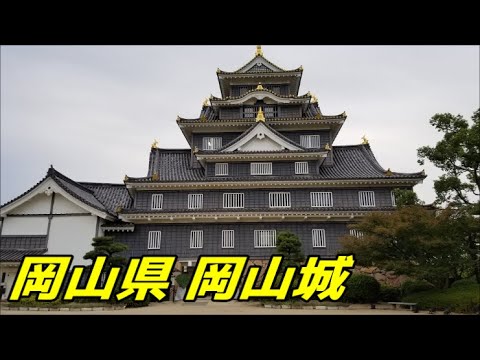Okayama Castle is a Japanese castle located in Okayama, Ono-gun, Bizen (currently Kita-ku, Okayama City, Okayama Prefecture).A nationally designated historic site.Other names are Ujo and Kinujo.
During the Warring States period, the foundation of the castle in the early modern period was born by Mr. Ukita, who grew up from the eastern part of Bizen and expanded to Mimasaka and the eastern part of Bizen, and was later maintained and expanded by Mr. Kobayakawa and Mr. Ikeda.
Okayama Castle was built on a small land with a series of hills with an altitude of more than 10 meters.
At that time, the mouth of the Asahi River diverged into multiple tributaries, with “Okayama” (also known as Shibaokayama) in the center of the vast delta area called Osuhara, “Ishiyama” to the west of it, and further northwest of it. Is said to have been used as a hazard in each era, with three hills of “Mt. Tenjin” (also known as Mt. Tenman) in a row. The Ukita Naoie entered and rebuilt Ishiyama Castle, which was located in Ishiyama, and later the Ukita Hideie, a child, set up a new main enclosure in Okayama, which is adjacent to it, and the castle was built to incorporate Ishiyama Castle. Was done. This is Okayama Castle.
The territory of the castle is basically a ladder type, and the three-tiered castle layout is Hirayama Castle, which extends to only one side on the west side. In other words, it is a very thin territory with no frog from the north to the east of the main enclosure. Therefore, it is said that the flow path of Asahikawa was changed and used as a natural moat to prepare for the eastern side. Furthermore, it is said that “Korakuen” was built in place of Guo. The castle tower is a compound watchtower type on the 4th and 6th floors, and the entrance is located in the attached salt storage. In particular, since the initial weight plane shape is a distorted polygon, it is said that it imitates the Azuchi castle lord who also has a distorted polygonal plane castle tower, but it imitates the Osaka castle castle tower by Hideyoshi Hashiba. There is also a theory that it is doing. Its appearance is characterized by a black lacquered clapboard, and from this impression it is also called “Ujo” and is contrasted with Himeji Castle, which is also called “Hakurojo” in the neighboring prefecture of the same Sanyo Expressway. Sometimes. From the old map of the Genroku era, you can see the castle surrounded by a five-storied moat and the castle town that stretches 3.5km north-south and 1.3km east-west.


AloJapan.com